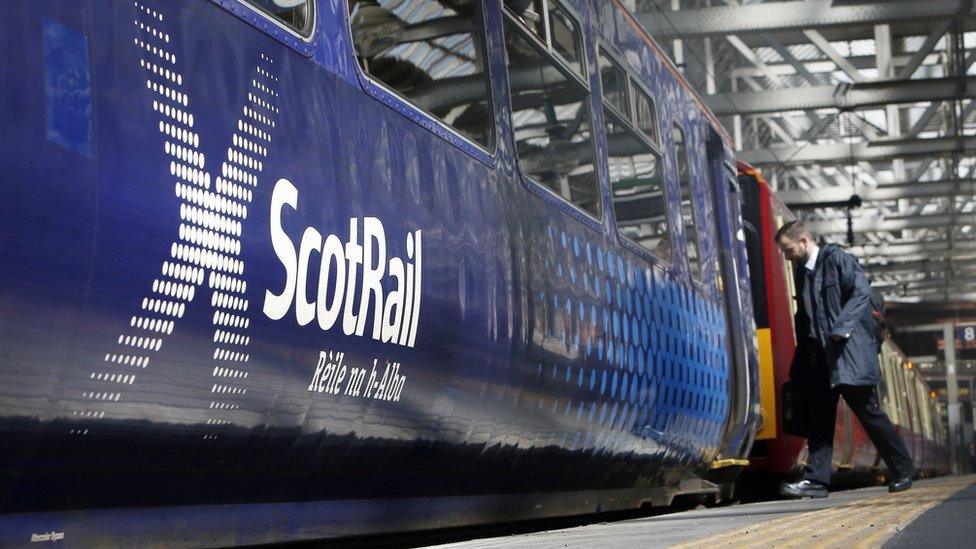Why would the government want to run ScotRail?
- Published
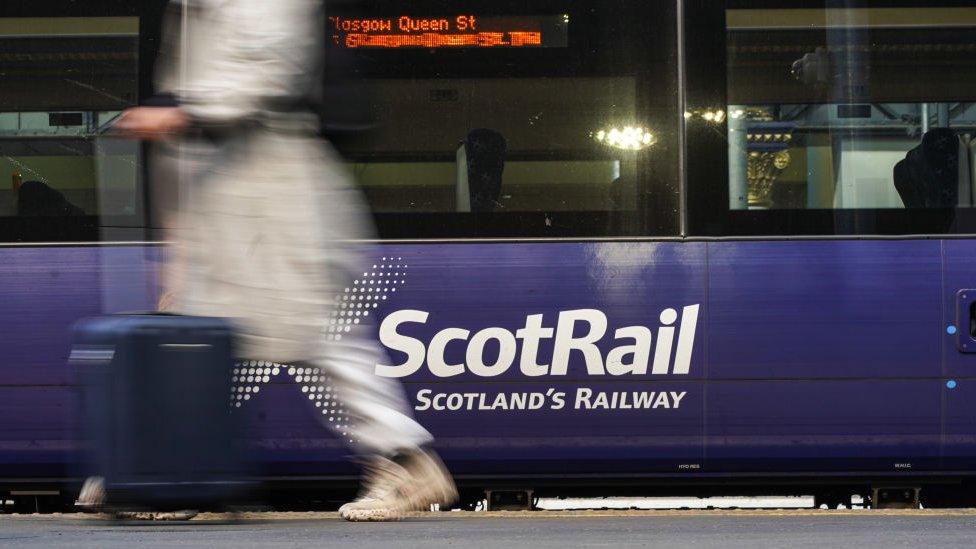
The Scottish government is wrestling with the challenges of running the railways, having seen ScotRail cut services by a third within weeks of being taken into public hands.
Did ministers see the risks of nationalisation coming down the tracks? And if they ultimately pull it off, could the rewards yet make the move worthwhile?

Take a glance at the chaos affecting Scotland's rail services, and you might be forgiven for wondering why the government wanted any part of it.
Past experience would suggest there is precious little credit to be had when the trains run on time, and hell to pay when they are late or cancelled.
And indeed UK governments of old achieved longevity while privatising such services, outsourcing not just the running of them but crucially the blame when things go wrong.
But bringing the trains back into public ownership has been a hot topic in recent years. A new state-owned body is being established to set timetables and prices in England, as well as managing infrastructure.
The Scottish government has gone a step further and taken the country's main rail operator into public hands, having cut short the contract of the private firm previously in charge.
All of this is happening at a moment when the rail industry and the way people travel more generally is in flux. Passenger numbers have not bounced back to pre-pandemic levels, revenues are down and staff are restless.
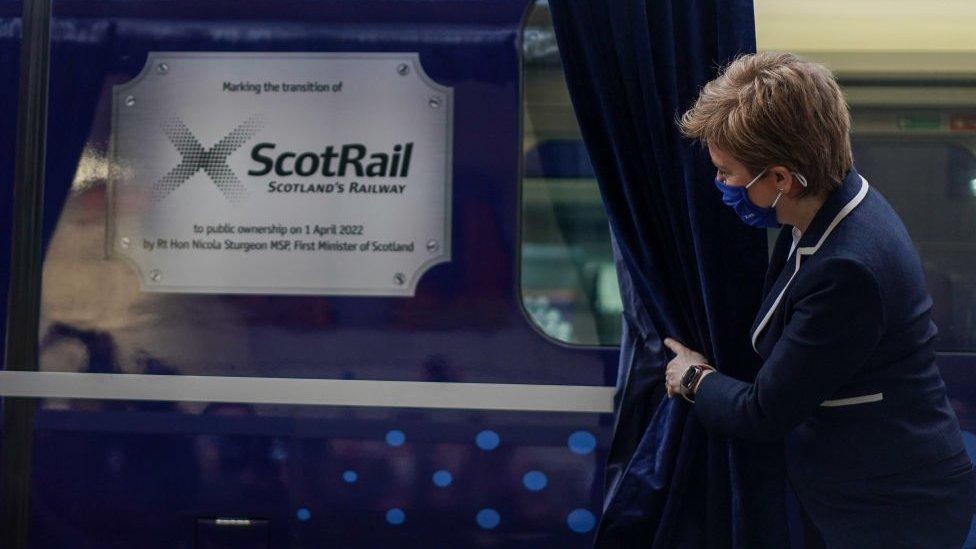
Nicola Sturgeon lifted the curtain on the new ScotRail arrangement in April
For ministers, the current row is just one of the risks of being in charge of a service which is meant to run on a precise timetable.
When people are rolling their eyes on an unexpectedly deserted platform, their ire can now be directed at public figures such as Nicola Sturgeon and Jenny Gilruth, rather than faceless suits in a boardroom.
It's not just the passengers, either - unions are well aware that politicians dislike taking unpopular decisions, and can try to use this as leverage.
Barrage of questions
Publicly-run ScotRail is in a markedly different position to a cut-throat private firm, like for example P&O Ferries, which was able to sack hundreds of staff, ride out a wave of outrage and quietly go back about its business.
You can picture shop stewards rubbing their hands with glee when Nicola Sturgeon is facing a barrage of questions at Holyrood about service cuts.
Drivers union Aslef is already pitching demands directly to the first minister, external - knowing that when she says she wants things back to normal as quickly as possible, it puts pressure on her own side to get around the table and settle.
And for a government with a limited budget, there is an extremely delicate balance to be struck here.
A solution must be found which placates staff into restoring services swiftly, while also not being seen to cave too easily to their demands at a time when many other public service workers are eyeing the cost of living.
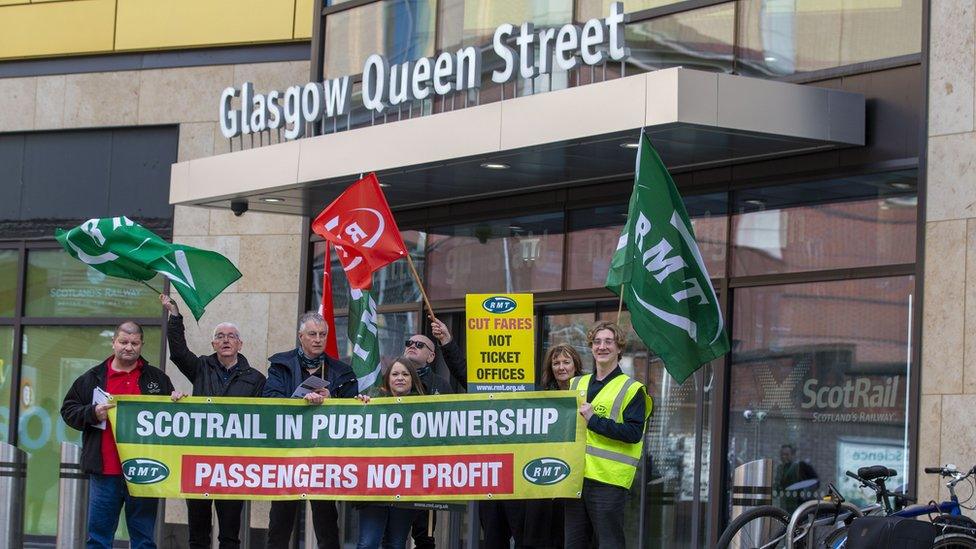
If those are the risks, what are the potential rewards of nationalisation?
It may not have the emotional pull of the NHS, but people generally like the idea of a publicly-run train service. The policy has proved popular not just for the SNP but in previous UK Labour campaigns - and the unions were also all for it, calling the move "long overdue".
There is also an argument that if rail services are approaching a junction, ministers would like to be part of determining what a radical new future looks like - whereas private firms might have more of a vested interest in the status quo.
Huge test
Every government wants to have vision. In this case that definitely didn't include massive cuts inside a matter of weeks, but ministers will hope this is only a temporary delay to their ambitions.
And on an even bigger scale, the move is a building block in the SNP's gradualist approach to winning independence by proving it can run a steady ship.
Being in power at Holyrood - at a time when more responsibilities are being devolved - has enabled Ms Sturgeon and her team to show that everything from income tax to the benefits system can be run independently from Edinburgh.
This actually makes it difficult for the SNP politically to shy away from any challenge, because the opposition will pounce on any hesitation - the way they have with some delays to the devolution of those welfare powers.
It is clearly a huge test, but nationalisation is also an opportunity for the Scottish government to show it can actually deliver on big promises.
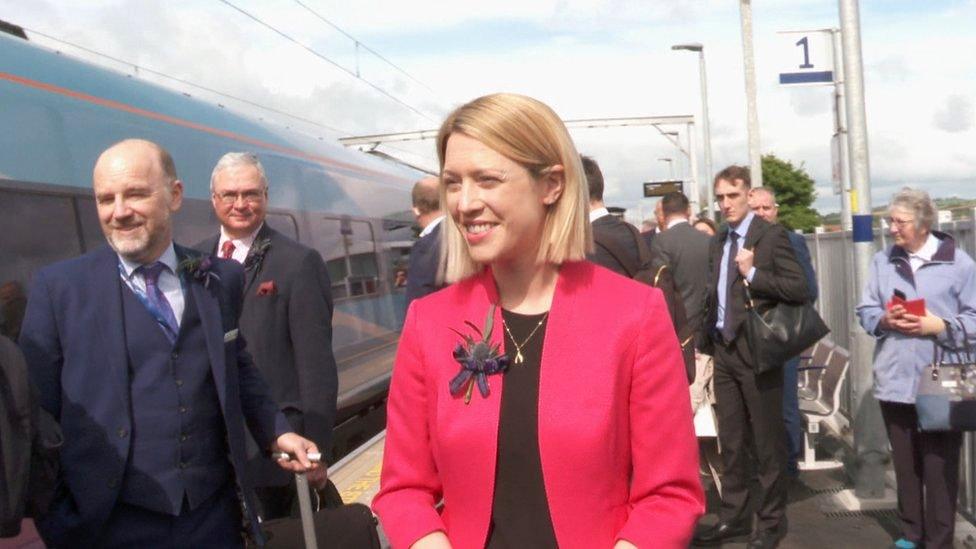
Jenny Gilruth has been handed a huge task only a few months after becoming transport minister
This is also a particular test/opportunity for Jenny Gilruth, who was shuffled into the transport brief in January after two years in a junior post.
The success of this project will ultimately determine her political future. She could end up out on her ear like Stewart Stevenson, or she could follow the path of Humza Yousaf and Derek Mackay, who moved on to big jobs in the full cabinet.
She must have known it would not be easy. The government is well aware that buying things is not straightforward, given its past experience with Prestwick Airport and the Ferguson shipyard.
Fair enough, ministers could not have suspected when they decided to cut short Abellio's contract in December 2019 that the world was standing on the brink of a pandemic which would change a lot more than travel patterns.
But by the time they announced it would be taken into public hands in 2021, they would have seen issues being stored up at ScotRail. The unions have not exactly been shy about flagging them up.
And given Abellio was effectively working out its notice for years - the 2019 decision had been telegraphed well in advance - there was little incentive for the Dutch firm to plan for the future or foster good relations with staff.
Even with that context in mind, things could scarcely have got off to a worse start. Ministers will be every bit as desperate as passengers for the current dispute to be settled.
But they will hope that in the end the risks will be worth it, and that there will ultimately be a reward to make the current troubles worthwhile.
Related topics
- Published23 May 2022
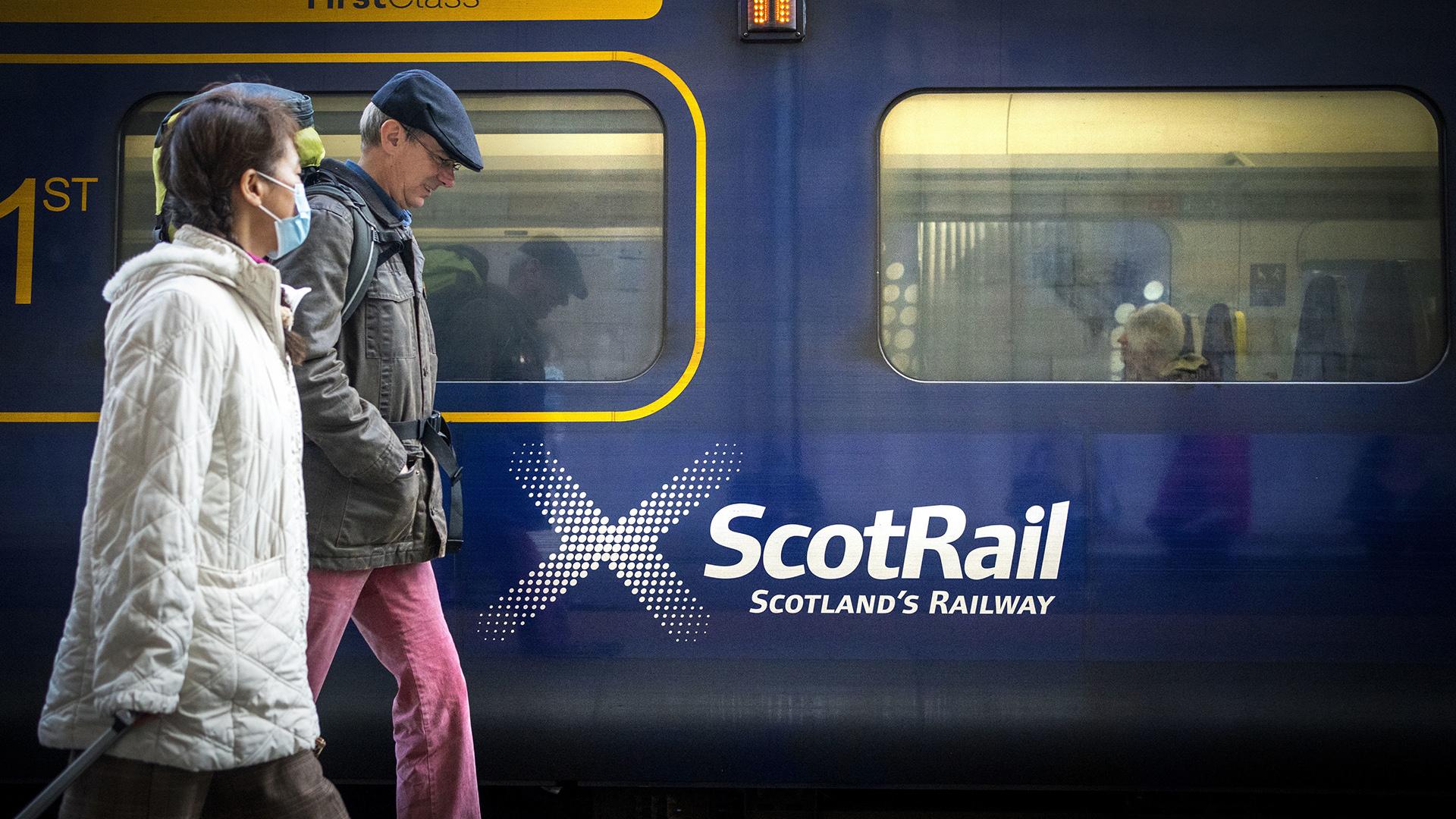
- Published23 May 2022

- Published23 May 2022
